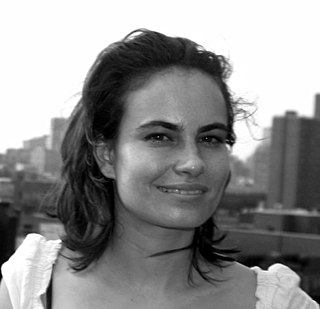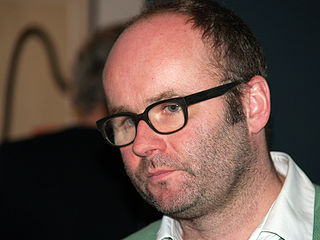
The Museum of Modern Art (MoMA) is an art museum located in Midtown Manhattan, New York City, on 53rd Street between Fifth and Sixth Avenues. The institution was conceived in 1929 by Abby Aldrich Rockefeller, Lillie P. Bliss, and Mary Quinn Sullivan. Initially located in the Heckscher Building on Fifth Avenue, it opened just days after the Wall Street Crash. The museum, America's first devoted exclusively to modern art, was led by A. Conger Goodyear as president and Abby Rockefeller as treasurer, with Alfred H. Barr Jr. as its first director. Under Barr's leadership, the museum's collection rapidly expanded, beginning with an inaugural exhibition of works by European modernists. Despite financial challenges, including opposition from John D. Rockefeller Jr., the museum moved to several temporary locations in its early years, and John D. Rockefeller Jr. eventually donated the land for its permanent site.

Garry Winogrand was an American street photographer, known for his portrayal of U.S. life and its social issues in the mid-20th century. Photography curator, historian, and critic John Szarkowski called Winogrand the central photographer of his generation.

Hito Steyerl is a German filmmaker, moving image artist, writer, and innovator of the essay documentary. Her principal topics of interest are media, technology, and the global circulation of images. Steyerl holds a PhD in philosophy from the Academy of Fine Arts Vienna. She is currently a professor of New Media Art at the Berlin University of the Arts, where she co-founded the Research Center for Proxy Politics, together with Vera Tollmann and Boaz Levin.
Nicholas Nixon is an American photographer, known for his work in portraiture and documentary photography, and for using the 8×10 inch view camera.

Vik Muniz is a Brazilian artist and photographer. His work has been met with both commercial success and critical acclaim, and has been exhibited worldwide. In 1998, he participated in the 24th International Biennale in São Paulo, and in 2001, he represented Brazil at the 49th Biennale in Venice, Italy.

Inka Essenhigh is an American painter based in New York City. Throughout her career, Essenhigh has had solo exhibitions at galleries such as Deitch Projects, Mary Boone Gallery, 303 Gallery, Stefan Stux Gallery, and Jacob Lewis Gallery in New York, Kotaro Nukaga, Tomio Koyama Gallery in Tokyo, and Il Capricorno in Venice.

Lorna Simpson is an American photographer and multimedia artist whose works have been exhibited both nationally and internationally. In 1990, she became one of the first African-American woman to exhibit at the Venice Biennale. She came to prominence in the 1980s and 1990s with photo-text installations such as Guarded Conditions and Square Deal that questioned the nature of identity, gender, race, history and representation. Simpson continues to explore these themes in relation to memory and history using photography, film, video, painting, drawing, audio, and sculpture.

Thomas Cyrill Demand is a German sculptor and photographer. He currently lives and works in Berlin and Los Angeles, and teaches at the University of Fine Arts, Hamburg. He makes photographs of three-dimensional models that look like real images of rooms and other spaces, often sites loaded with social and political meanings. Demand thus describes himself not as a photographer, but as a conceptual artist for whom photography is an intrinsic part of his creative process.
Rosalind Fox Solomon is an American photographer based in New York City.
Foxy Production is a New York contemporary art gallery founded by Michael Gillespie and John Thomson.

Penelope Umbrico is an American artist best known for her work that appropriates images found using search engines and picture sharing websites.

Elad Lassry is an American artist who lives and works in Los Angeles.
Roe Ethridge is a postmodernist commercial and art photographer, known for exploring the plastic nature of photography – how pictures can be easily replicated and recombined to create new visual experiences. He often adapts images that have already been published, adding new, sculpted simulations of reality, or alternatively creates highly stylized versions of classical compositions, such as a still life bowl of moldy fruit which appeared on the cover of Vice magazine, or landscapes and portraits with surprising elements. After participating in the 2008 Whitney Biennial, his work has been collected by several leading public museums, including the Museum of Modern Art, Institute of Contemporary Art, Boston, Museum of Contemporary Art, Los Angeles, and the Tate Modern. In 2010, his work was included in the MoMA's 25th Anniversary New Photography exhibit.
Nina Kuo is a Chinese American painter, photographer, sculptor, author, video artist and activist who lives and works in New York City. Her work examines the role of women, feminism and identity in Asian-American art. Kuo has worked in partnership with the artist Lorin Roser.

Polly E. Apfelbaum is an American contemporary visual artist, who is primarily known for her colorful drawings, sculptures, and fabric floor pieces, which she refers to as "fallen paintings". She currently lives and works in New York City, New York.
Michele Abeles is an American visual artist and photographer.
Joanna Piotrowska is a Polish artist based in London. She examines the human condition through performative acts and the construction of multiple ‘social landscapes’ using photography, performance and film. Family archives, self-defence manuals and psychotherapeutic methods are used as reference points as Piotrowska explores the complex roles which play out in everyday performance. Her psychologically charged photographs probe human behaviour and the dynamics of familial relations, exploring intimacy, violence, control, and self-protection. The artist reveals moments of care as well as hierarchies of power, anxieties, and imposed conventions that play out in the domestic sphere.

Gina Beavers is an American artist based in the New York area. She first gained attention in the early 2010s for thickly painted, relief-like acrylic images of food, cosmetics techniques and bodybuilders appropriated from Instagram snapshots and selfies found using hashtags such as #foodporn, #sixpack and #makeuptutorial. Her later work has continued to recombine these recurrent subjects, as well as explore memes, irreverent conflations of genres or art history and kitsch, identity, fandom and celebrity-worship. In 2019, New York Times critic Martha Schwendener described her paintings as "canny statements on contemporary bodies, beauty and culture … [that] tackle the weirdness of immaterial images floating through the ether, building them up into something monumental, rather than dismissing them."
Rachelle Anayansi Mozman Solano is an American visual artist working primarily in photography and video and a clinical psychoanalyst born in New York City. She currently works in both New York and in Panama. Mozman Solano's photographs and moving images simultaneously explore the relationship between storytelling, narrative fiction and documentary and the way that stories built on perception shape culture and condition behavior of individuals and environment.
Ambera Wellmann is a Canadian painter who depicts human bodies in between play and violence, movement and dissolution. She has exhibited internationally at venues including Lulu in Mexico City, the 16th Istanbul Biennale in 2019, MoMA Warsaw, and others. Wellmann is based between Mexico City, Berlin, and New York.










